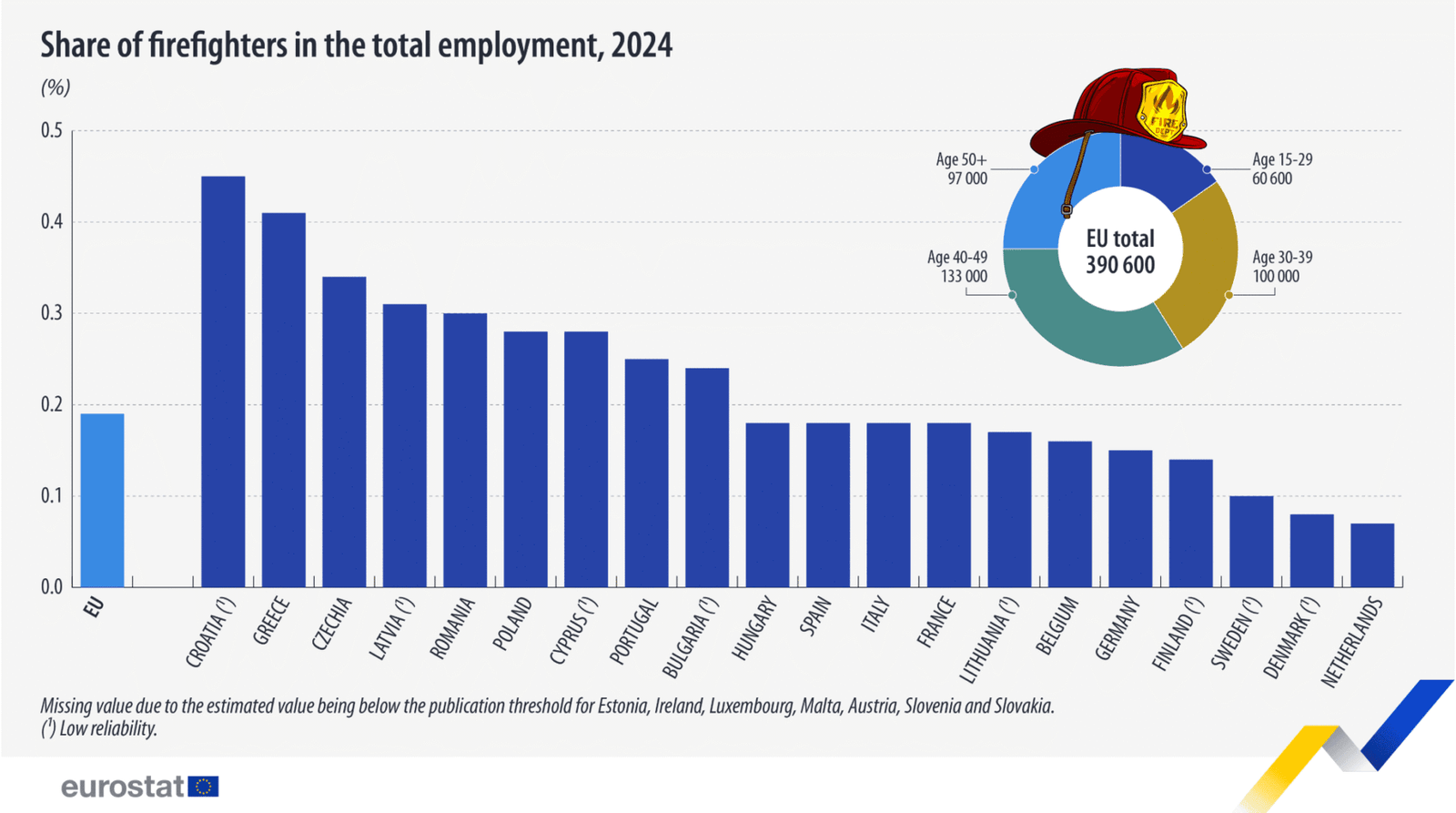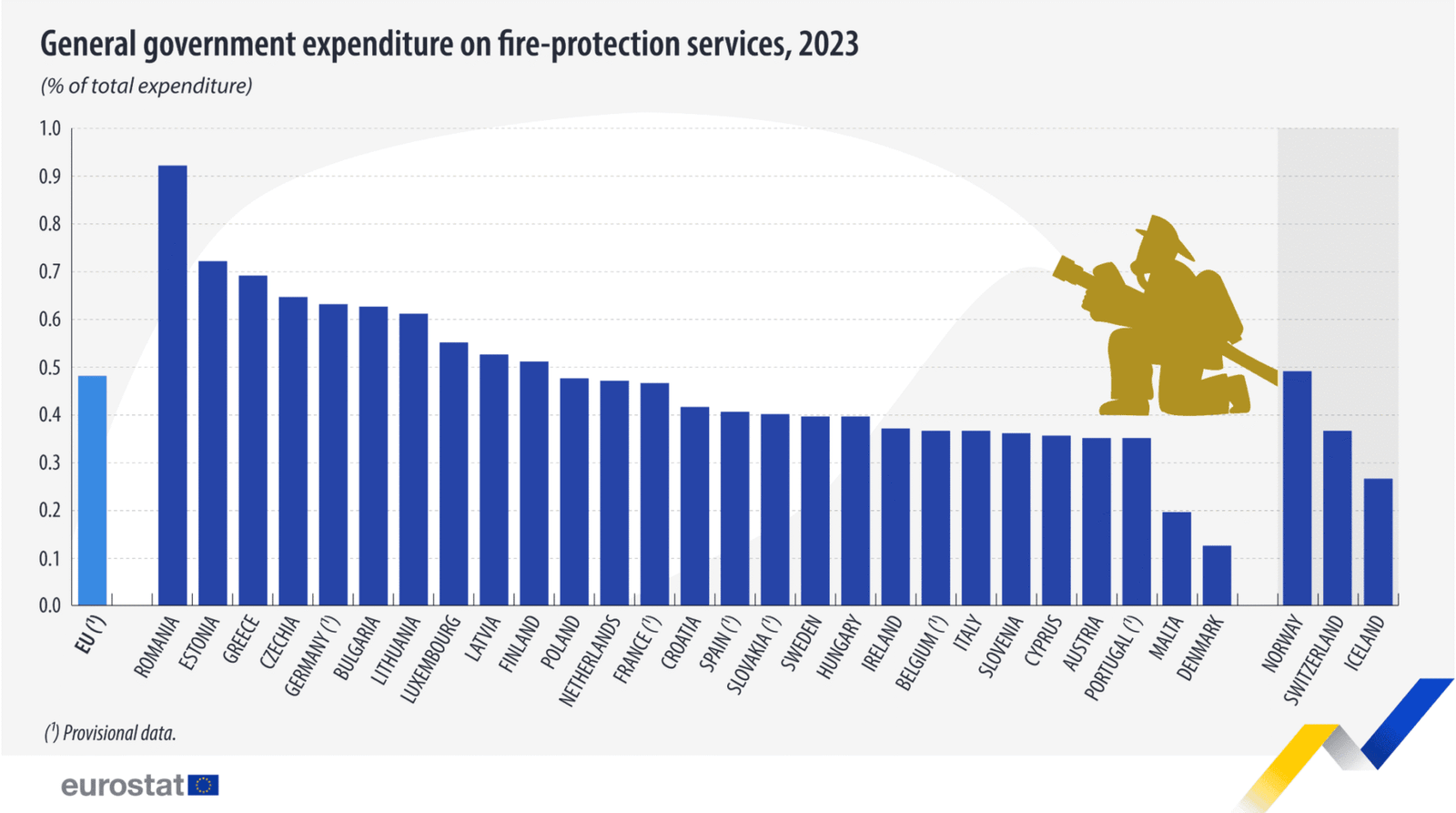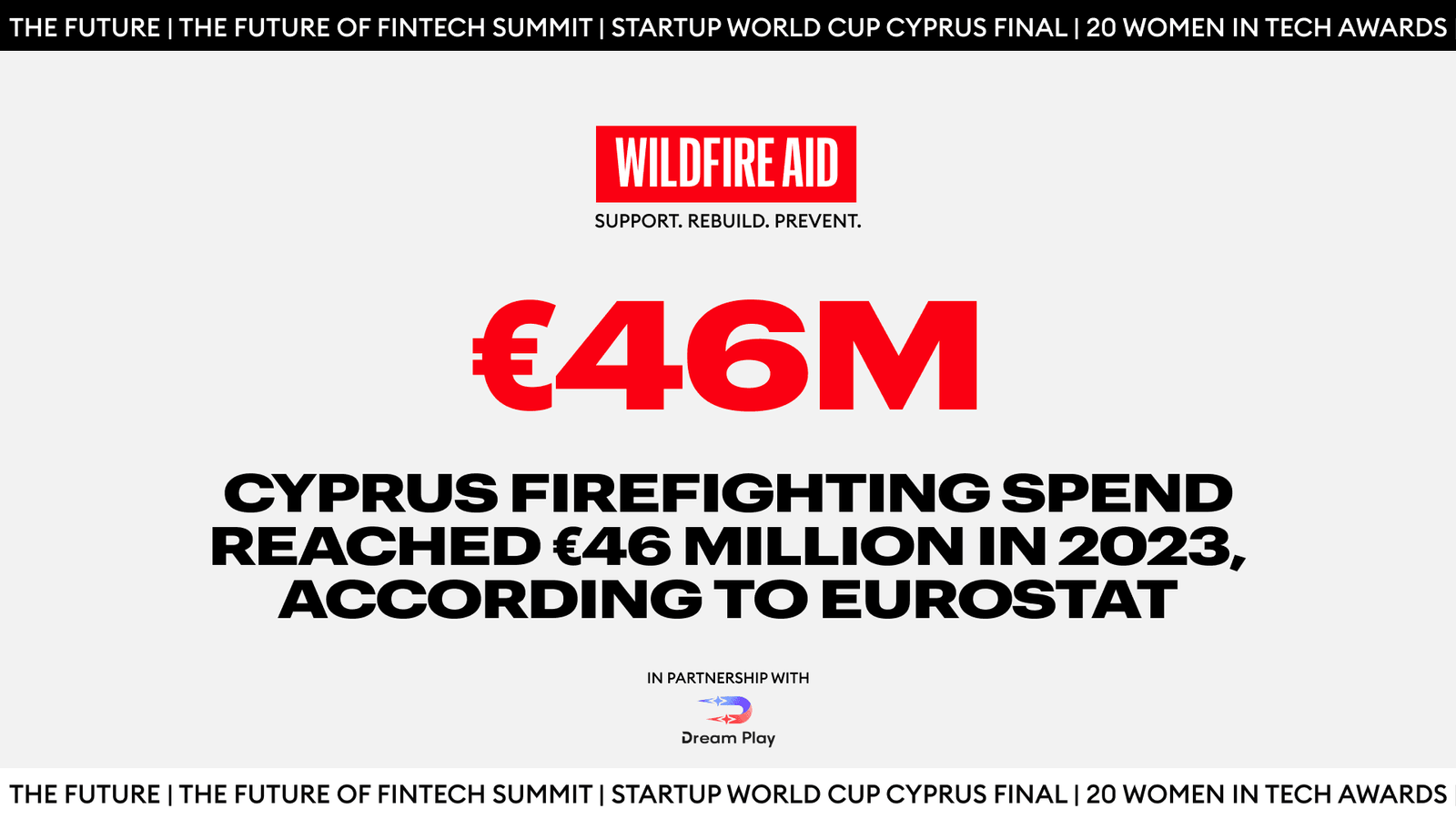The latest Eurostat release provides an overall view of Europe’s firefighting workforce and related public spending. Across the EU, there were 390,600 professional firefighters in 2024, accounting for 0.19% of total employment. Governments devoted €40.6 billion to fire-protection services in 2023, or 0.5% of their budgets. The data is stable at the EU level, but there are wider differences across countries. For Cyprus, the data shows a small workforce and a moderate public budget share. These figures raise questions about the country’s staffing ratio, spending priorities, and long-term resilience.

EU Snapshot: Workforce and Expenditure
The Eurostat report data takes into consideration only professional firefighters. It measures them as a share of all jobs in each country. It also reports government spending under the “fire-protected services” in the COFOG classification, which groups budgets by function, such as health, education, and safety.
Follow THE FUTURE on LinkedIn, Facebook, Instagram, X and Telegram
The EU figure of 390,600 professionals in 2024 shows an increase of 28,200 from the previous year. The workforce share has stayed close to 0.19% of EU employment.
On the spending side, Member States devoted €40.6 billion in 2023, an 8.5% rise from the year before. Since 2017, the EU average share has remained steady at 0.5% of total public budgets. Across countries, however, there is wide variation. Romania, for one, spent 0.9% in 2023, while Estonia and Greece each stood at 0.7%. Denmark, a country with one of the lowest public fund budgets for “fire-protected services, committed 0.1%, Malta 0.2%, and Portugal and Austria 0.3%.
Cyprus Workforce: Size and Share
Eurostat flagged Cyprus’s employment figure with a “u” reliability marker, meaning the number is less precise than other data points. The numbers, however, are still useful. Even though the exact figure should be read with caution, it can still be used to compare Cyprus’s position relative to other labour markets.
The Labour Force Survey shows Cyprus had 1,345 professional firefighters in 2024, not taking into account reserve staff or volunteers. This equals 0.276% of all jobs in the country. The share is above the EU average of 0.19%, which may reflect Cyprus’s structural needs, such as the risk of wildfires in long dry seasons.
The headcount is still small compared with nearby Member States. Croatia, for instance, reported the highest workforce density at 0.45%, followed by Greece at 0.41% and Czechia at 0.34%. The Netherlands, Denmark, and Sweden each had less than 0.1%.
Cyprus Expenditure: Moderate Share, Defined Signal
In 2023, Cyprus spent approximately €46.4 million on fire services. That equalled 0.3534% of the national budget. According to the International Association of Wildland Fire, the country experienced over 90 wildfires that year, which burned over 2,095 hectares.

This share is higher than in some wealthier states, such as Denmark’s 0.1% and Malta’s 0.2%, but lower than neighbours facing similar wildfire pressures, such as Greece’s 0.7% and Romania’s 0.9%. Relative to the EU average of 0.5%, Cyprus is in the middle.
Overall, Cyprus’s spending seems to suggest it covers the essentials of staffing and equipment without expanding its budget to the higher levels seen in parts of Eastern and Southern Europe.
Macroeconomic Implications for Cyprus
Three points stand out here.
First, Cyprus’s workforce is small in number but proportionally higher than the EU mean. This suggests operations rely on efficiency. Overtime work, reserve shifts, and seasonal surges need careful planning. Businesses exposed to fire risk, such as real estate, tourism, and energy, should understand that surge capacity is limited.
Second, the spending share of 0.35% is pretty moderate. The figure is unlikely to change considerably without policy change. It also makes pay and equipment costs predictable for 2025–2027. Cyprus’s small base, however, means wage increases or new equipment plans could quickly raise the share. Boards should track these costs in national budget frameworks.
Third, Cyprus spends more on fire protection than low-spending Western countries but less than nearby countries with higher wildfire risk. This middle position means the government funds the service at a basic but stable level. It avoids the budget strain of very high spending, but it also limits the ability to expand capacity. For investors and executives, the takeaway is that the service is reliable but lean. In the event of a very large fire season, resources could be stretched.
Final Thoughts
Eurostat’s release confirms that firefighting remains an important aspect of public budgets across the EU. For Cyprus, the 2024 workforce of 1,345 professionals and the 2023 spend of €46 million show a moderate and stable approach. The country balances fiscal prudence with operational need. For business leaders, the data suggests predictable costs but limited capacity. Both factors should shape risk planning and investment strategies in the years ahead.













